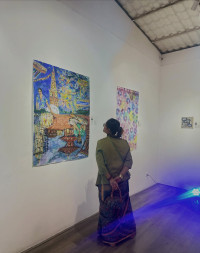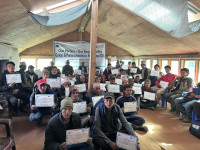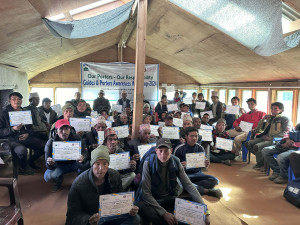Culture & Lifestyle
Shaping clay, shaping lives
In Bhaktapur’s Pottery Square, women quietly transform a male-dominated craft—preserving tradition, and finding independence.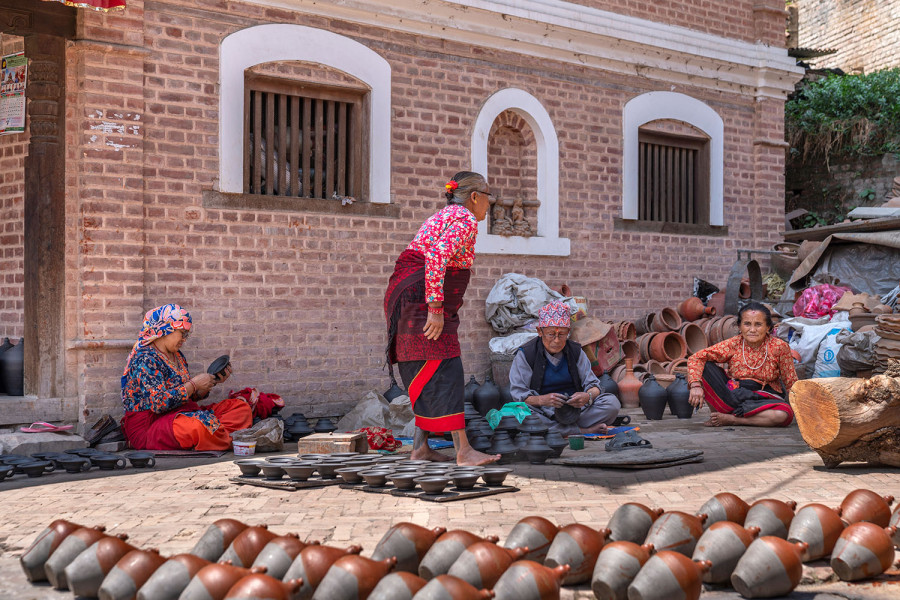
Reeva Khanal
A few months ago, I visited Bhaktapur Pottery Square to document its pottery culture for a social science project. As a media student, I wanted to explore it in depth, speaking to the artisans who have preserved this tradition for generations. Pottery here isn’t just a craft—it’s a livelihood, an identity, and a legacy passed down through families.
Something from those conversations stayed with me, lingering long after I left. So, when the chance came to write this story, I felt compelled to return—not just to report but to reconnect with the people and their enduring art.
Ranjana Prajapati, a pottery worker in Bhaktapur’s Pottery Square, began working here after the Covid lockdown hampered her family’s income. “During the lockdown, every business faced a fallout,” she recalls. “That’s when I started helping my husband with pottery.”
She mentions that only a handful of women in the area teach others how to make clay products. “In Kathmandu, you won’t see many women in this profession,” she says. “But their participation is more visible in Tarai or India.”
Prajapati admits she has had no training. Her husband works an office job in the afternoons and makes pottery only on Saturdays. “I used to help him by preparing the clay and doing the colouring,” she says. “Saturdays used to be so packed that I couldn’t even assist those who wanted to learn. I had to wait for my husband to help me, which held me back.”
Over time, she began learning independently and has started teaching a few others. “Before, I watched others work in silence, even though I was eager to do it myself,” she says.
When asked if she had applied for any formal training, she mentioned the ceramic training offered at SOS Thimi. “I applied with my friends, but none of us were accepted,” she shares. “I don’t know why—we weren’t even given a reason.”
Prajapati reflects on the societal barriers she’s faced as a woman. “Our society is still male-dominated. Growing up, we were never given the privilege to learn such skills,” she says.
Speaking about the business, she notes a recent decline in sales. “Business has been slow recently. The number of tourists visiting has also gone down. But I’m hopeful it’ll pick up again from next month. ”
Priya Laxmi Prajapati, 56, has been in this profession for over five years. Her journey into the craft began after a personal tragedy—her husband was diagnosed with cancer around the time of the 2015 earthquake, and following his passing, she had no option but to start working to support her family.
“I had to start working—it wasn’t a choice,” she says. “I learnt it by observing the men making clay products. No one taught me.”
Priya now produces and sells clay items independently and gives training in schools. “I’m the only woman who works professionally in the pottery square,” she says. “Some women are slowly learning, but I’ve come a long way doing this by myself.”
Her workday often begins early in the morning, though sometimes she starts in the afternoon. A mother of two, she earns enough to support her children’s education.
“I want more women to come into this field and work independently,” she says. But the lack of systemic and community support worries her. “The government hasn’t done anything to preserve or promote this craft. Pottery-making is still limited to certain communities, and authorities aren’t paying attention,” she adds.
She believes pottery has growing relevance today, especially in environmental sustainability. “People are using less plastic now—there’s a need for clay products.”
However, being a single woman in a male-dominated field hasn’t been easy. “People—even other women—question why I do this kind of work. They look down on me for trying to stand on my own,” she says.
On top of the emotional strain, financial difficulties persist. “After my husband passed away, things have been very hard. I’m trying to raise my children, earn a living, rebuild a life—but instead of support, I face judgement,” she says.
Ram Chandra Prajapati has been working in pottery since childhood. As a member of the Prajapati community, he describes pottery as generational work—something that many like him have grown up learning.
“I started when I was young, so I picked up the basics early,” he says. “In our community, children have traditionally learnt this craft from a young age.”
However, he believes that today’s youth need more formal support. “The younger generation still needs proper training,” he says. He recalls how he used to collect mud from the Suryabinayak area a few years back. But due to urbanisation, “Now I have to buy everything used in pottery making,” he says. “The clay that was once accessible is getting harder to find.”
He expresses concern over the profession’s sustainability. “If it continues like this—if the raw materials keep becoming scarce—this profession could fade away in just a few years.”
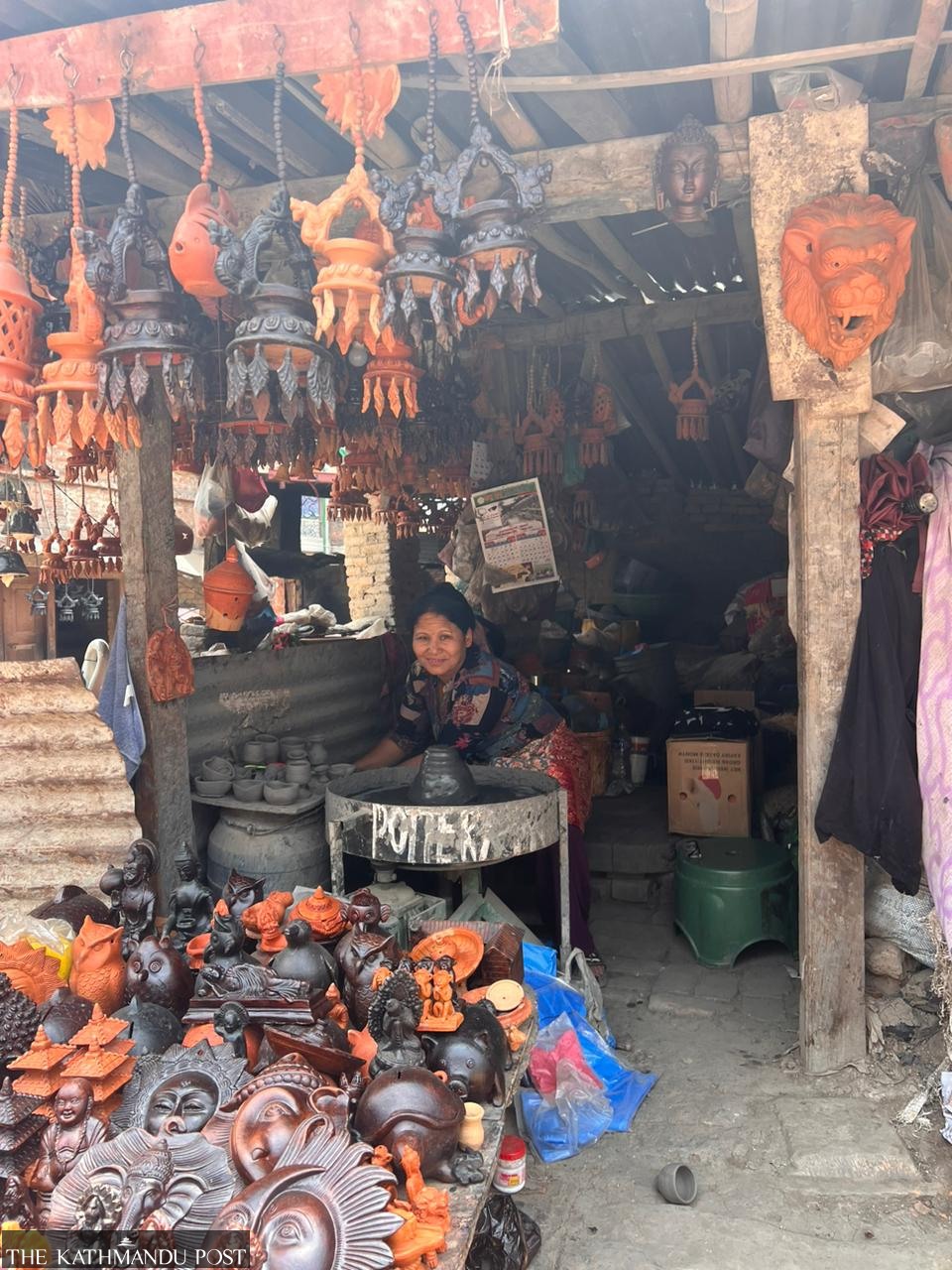
He adds that some women who have managed to learn the craft have begun working. “Neither the municipality nor the government has done anything to help us,” he says.
Ceramic mud, he notes, is quite expensive, while the locally sourced kalo maato (local mud) is somewhat cheaper. Still, the rising cost of materials poses a challenge. “Right now, the business is in the middle,” he says. “Not booming, not gone—but uncertain.”
Binod Kumar Prajapati describes pottery as his generational work—an inheritance of skill and passion. “This craft runs in our family,” he says. “But really, anyone can get involved. It’s all about interest.”
He believes pottery can be a sustainable source of income if pursued seriously. “If someone is dedicated, they can earn Rs10,000 to Rs15,000 a month—by making creative products, teaching others, or helping them learn.”
Binod proudly shares that even his young daughter is involved in the work. He explains that men traditionally handled most of the heavier tasks, while women assisted with cutting, shaping, and colouring. “One person can’t manage everything,” he says. “We need both men and women working together. But women also have to manage the household, cook, and care for the family, so their time gets divided.”
He acknowledges that gender roles are shifting. “These days, everyone contributes equally—men and women alike,” he says.
He adds that the municipality has done what it can regarding promotion. “Pottery Square is marked on the map of Bhaktapur alongside Durbar Square, Taumadhi Square, and Dattatreya Square,” he says. “It’s included in photos, which helps—but that alone is not enough.”
Binod stresses that government support is crucial, especially when accessing raw materials like clay and wood. “We need an environment where materials are available easily,” he says. “That way, the profession can survive, and future generations will continue to learn about it.”
Reflecting on the challenges post-Covid, he adds, “Every business has taken a hit. We have to support one another now. Not everyone has to become a doctor or engineer—professions like ours are important too.”
He believes expanding access to pottery training could revive interest among young people. “If more training centres were opened, it could inspire a whole new generation,” he says.
Bhaktapur pottery continues to mould more than clay—it shapes identity, community, and the quiet strength of tradition. Yet the future of pottery workers hangs in uncertainty. Without stronger institutional support, access to materials, and broader societal recognition, this generational craft may struggle to stay afloat.
Every profession has its importance, and learning a craft is about much more than just the skill—it’s about respect for the work and each other within a community. From the outside, pottery might seem like something anyone can do easily, perhaps even a simple, beautiful act. But looking deeper, we understand the significance, dedication, and journey behind every piece shaped by skilled hands.




 19.12°C Kathmandu
19.12°C Kathmandu



